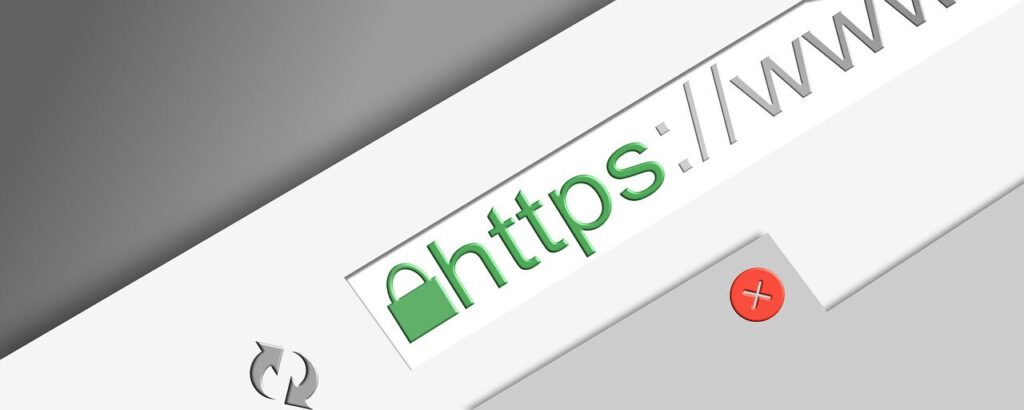Handling your SEO in-house as a small or medium-sized company can be a stressful experience. You might not know where to start or what will actually help your search ranking. The web is over-saturated with content about SEO (some of it wrong). So, we’re hoping this will give you a place to start.

GETTING THE ‘S’ IN HTTPS
If you haven’t heard – the ‘S’ stands for secure, and secure is something you want to be. In a world of big data, your consumers want to know that what they’re sharing with you isn’t public information.
What the ‘S’ actually means is that your HTTP request is using the Secure Sockets Layer. SSL makes sure to utilize encryption to keep data between the user and the business. That one extra letter acts as a barrier between customer info and potential eavesdroppers or hackers. It keeps data from being altered or corrupted during transmission.
While wanting your users to trust your site is probably reason enough to make the switch, here’s some encouragement. This July, Google officially started distinguishing secured vs. not secured websites from each other. Non-https websites are now labeled as ‘Not Secure’ when users visit. And if Google wants you to be secure, it’s to your SEO advantage to comply.
What can that ‘S’ do for you?
- Increase Your Rankings: while it’s not the most dramatic boost, it will definitely help.
- Clear Up Your Referrals. A non-secure site will sometimes confuse referral traffic with direct traffic. However, a secure site preserves the referral data – keeping your Google Analytics info precise.
- Encrypt Data and Communication (like credit cards!)
- Authenticate Your Website
Sound intimidating? This guide to securing that ‘S’ will help.

404 IS NOT YOUR FRIEND
Nothing – I mean nothing is more frustrating than clicking a link on your Search Engine Results Page (aka after you Google) and getting a message that says 404 Error – Not Found. This kind of thing can happen when you remove a page and it is still linked somewhere else on your site.
It’s absolutely sure to skyrocket your bounce rate (and it’s totally annoying and bad for your user experience). When it comes to dealing with 404 errors, the jury is still out on whether or not it’s best to leave them be. We recommend a somewhere in between.
For starters, we definitely don’t believe in leaving every 404 error as it is. This can create a frustrated user and kill your bounce rate. However, it’s not always to your advantage to correct every 404 error that your website registers.
So what’s the answer?
What we typically do with 404 errors is ’301’ them. AKA when users click the link to a page that is no longer there, they are re-directed to another page on the website. A lot of times this makes sense. For instance, we once moved our ‘Team Member’ information to the ‘About Page’ of our website, instead of it populating its own page. In this case, it makes sense that when people click to visit our ‘Team Member’ page, they are redirected to the ‘About’ page.
However, in some cases, there isn’t always a place to direct them where the user can find the same information. It’s not useful for a user seeking specific information to be redirected to a general homepage.
So, what’s the best practice? We recommend 301’ing your 404 errors to the most relevant pages you possibly can. When we don’t find a great place for redirection, we 301 them anyways. But, we try to keep track of the error pages that seem to be getting a lot of traffic and try to develop a better experience for them – whether that’s adding content to the page or putting the info somewhere else.

OPTIMIZE WHAT YOU HAVE
While this undertaking sounds daunting, altering your existing pages in accordance with Google’s ranking factors can be a quick win for your SEO. Rather than solely focusing on developing new, optimized content – look for small changes you can make on the pages you’ve already published.
For some quick wins within this quick win tip:
- Make sure each of your pages have Meta Descriptions. This is what the user sees on the Search Engine Results Page when Google shows a link to your page. In the Meta Description, you can summarize what the user will see on the page and include the main keyword you want to optimize for. That way, when the user searches with that keyword, they can be confident your link will include relevant information.
- Headers – Google likes it when you divide your information under relevant headings and subheadings (and Google likes it because users like it).
- Bullet Points – make sure users can scan your information quickly to make sure it’s relevant before diving in.
The good thing is our SEO-obsessed tech world has developed tools for us so we don’t have to individually check each attribute of a page. Plugins like Yoast SEO for WordPress can help you figure out if your content is a) readable and b) optimized. It will also give you tips for optimization you can do on the spot.
SEMRush is also a great tool for brainstorming ways to further optimize your site and comparing your keyword strategy to competitors. (They’ll also let you know when you have 404 errors that need attention!)
DUPLICATE CONTENT
Mimicry is the sincerest form of flattery – but not when it comes to SEO. Essentially, when the same content appears in more than one place on the internet (AKA more than one unique URL), Google registers it as duplicate content.
While Google won’t technically penalize you for duplicate content – it will make it difficult for Google to choose which page is relevant to the user searching. It’s likely you wouldn’t have created duplicate content intentionally. Many times it can happen due to multiple URL variations (like if your HTTP pages don’t redirect to your HTTPS pages).
To avoid duplicate content issues, you’ll want to canonicalize your links or 301 direct the incorrect page to the correct page. Canonicalization will ensure that the multiple link variations will attribute traffic, content metrics, and ranking power to the URL you want to be identified. MOZ has a great guide for getting rid of duplicate content.

GET YOUR NAME ON THE LIST
Setting up a Google My Business for your company can be an easy first step in making your business easier to find. A Google My Business account allows you to appear in Google’s local search pack (which will appear above the first results on the Search Engine Results Page).
If you already have a Google My Business page, don’t forget to manage it. Ensuring that your phone number, address, and business information is accurate is important so users can actually reach you. That being said – make sure your information is consistent everywhere on the web. If it’s not, it can affect your ranking and authority with Google if not.
MAKE helps clients manage their listings with Yext. We can see everywhere their company is listed on the web, suppress any duplicate listings that may arise, and correct any inaccurate information that may populate the pages.
Keep in mind, these are just the ‘quick wins’ that can help you improve your SEO. There is a whole world of optimization techniques, ranking factors, and Search Engine Marketing information out there for you to consume.
We like to keep you up to date with SEO trends, so subscribe to our newsletter or follow us on Facebook and Instagram!
If all this information is causing a stress-fueled doubt that you can’t handle your SEO – it might be time to look into hiring a digital marketing agency that can handle it for you. If you don’t know if you’re ready for an agency, check out this blog.


